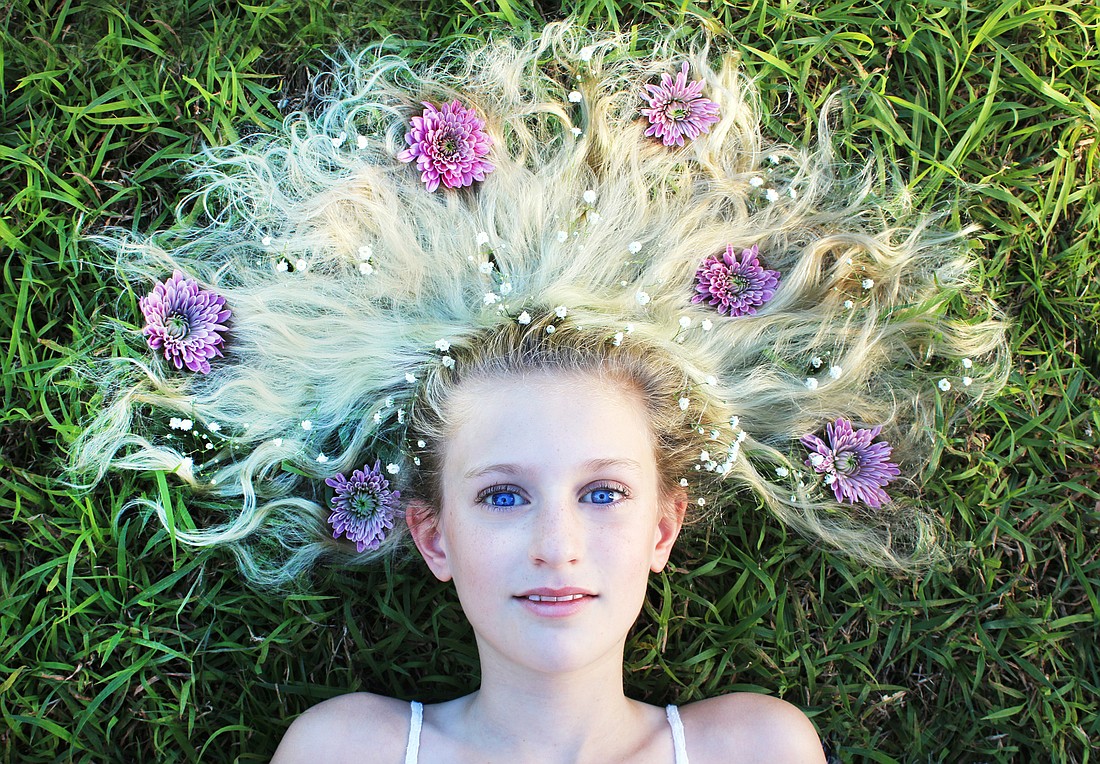- April 24, 2024
-
-
Loading

Loading

Winter Park will again live up to its reputation as an arts mecca when thousands gather for the 59th annual Winter Park Sidewalk Art Festival this weekend.
From March 16 to 18, Central Park and portions of Park Avenue will be transformed into a creative celebration with 225 national artists showing their wares and competing to win 63 awards valuing $72,500. The “Best of Show” winner will go home with $10,000 and have his or her piece donated to the city.
Claire Goodowens, Photographer
When a Winter Park Sidewalk Art Festival staff called Claire Goodowens to tell her she had advanced to festival placement finals, they weren’t expecting to speak to her mom.
“I answer the phone, ‘Yes, this is her mother speaking,’” Samantha Goodowens said. “They just respond, ‘Wait a moment, how old is Claire?’”
Although she’s only 11 years old, Winter Park local Claire Goodowens is bringing prints of her photos — hyper-detailed snapshots of flora and fauna — to the festival this weekend. She’s one of the three emerging artists selected for this year.
Claire started snapping photos at just 4 years old. Then, two years ago, she discovered she could flip her mom’s camera lens and focus it on subjects with a microscopic detail.
“I like the hidden patterns,” Claire said. “I get to see things that no one else can see.”
Her parents bought her a proper lens for her birthday and published a website so she could start advertising her photos. The subjects in her photos are from across the plant and animal kingdoms — tree frogs, flower buds, landscapes — but there’s one group she photographs more than any other.
“I love bugs; I love taking photos of bugs,” Claire said. “They just look so interesting.”
The young photographer has a routine during which she will walk around her house with her camera to check bushes and grass for any bugs or animals. She has to sneak up slowly and position her lens just six inches from her subject. Her parents marvel how animals she snapshots stay still long enough for her to take the photos. They call her the bug whisperer.
She’s hoping to buy a new lens with an auto-focus feature in the coming months to take even more photos. There’s one member of the animal kingdom she’s particularly keen on capturing.
“I want to get photos of a jumping spider,” Claire said. “They’ve got like 20 million eyes; they’re really cool.”
Robert Farrell, Silversmith
Robert Farrell doesn’t call himself an artist. After 30 years of working with metal and jewelry, he’s more comfortable with the term “craftsman.” The material he uses to construct his pieces, though, is what makes him proud.
“Everything I make is with sterling silver; it’s the material that I know,” he said. “I love the idea that objects that wouldn’t be made from a precious metal become a more treasured object. And it’s the psychology behind using the material; When (the audience) goes, ‘Oh, this is silver?’ You can tell it changes their opinion of it.”
Farrell, 57, has spent 30 years working with the metal. Although his focus used to be on designing jewelry and functional objects, he has pivoted to something more impressionistic over the past several years — tabletop-sized sculptures of barns, water towers, silos and buildings he dubs his “Rural America” imagery. Although some craftsmen create models accurate to the tiniest detail, Farrell goes another way.
“I’m trying to suggest an object using details that are removed a couple steps from reality,” he said. “You drift off to this childlike-place where it isn’t real; it’s an idea. My barns are taller and narrower than they’d be in real life. … If an object is more ambiguous, you can bring your own experiences to it and you can have more fun with it.”
Farrell is bringing more than 20 of his sculptures to the festival from his home in Venice, Florida. He refrains from putting his pieces in museums, because they take considerable time to put together. Instead, he opts to travel to about 10 shows a year to make his living. He said his new pieces evoke a comforting feeling in both his customers and himself.
“The worlds getting crazier, and I’m getting older, you want something that makes you feel safe,” Farrell. “When we look at something familiar, there’s a sense of security. … This (Rural America) imagery is calming. It’s part of that search for serenity.”
Stephen Bach, Landscape Painter
This isn’t Stephen Bach’s first trip to the festival — he has been invited close to 10 times.
Bach, a landscape painter for almost two decades, works from McRae Art Studios in Orlando. Come Friday, the artist will be bringing around a dozen of his oil-on-canvas, Florida-themed paintings to his booth.
His path to landscape painting was unorthodox -Bach got his big break painting for Olive Garden.
“Like most jobs like that, it was accidental,” Bach said. “I was an illustrator, and they were looking for someone to paint a mural in a Daytona restaurant, I didn’t know what Olive Garden was in 1985 … it bloomed into a full-time job.”
The Orlando resident spent 15 years creating artwork and murals for the restaurant chain across 48 states. He said he grew to have a love of the nation’s landscapes through his travels.
“It was really eye-opening and inspirational to go to all of these places,” Bach said. “I tried to go out and see the countryside, I took a lot of photographs. After I was back here at the studio in 2000, I started painting from the pictures.”
Bach, 66, hopes to wrap up a 40-by-40 painting of the Florida skyscape, complete with palm trees by the festival’s opening.
“You want to capture that emotion and drama that transcends just a picture of a place,” he said. “The paint gets thick before I find that special image.”